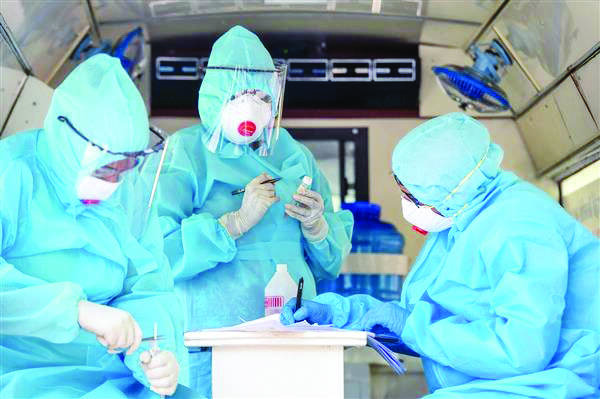New technology: Researchers develop COVID-19 sensor for more accurate and speedy test results

KOLKATA: A former IITian from Kolkata, Professor Ishan Barman—who is currently serving as an Associate Professor of Mechanical Engineering at Johns Hopkins University—has developed a COVID-19 sensor, which can revolutionise the testing process by adding accuracy and speed to it.
In a new study published in Nano Letters recently, the researchers claim that the new sensor, which require no sample preparation and minimal operator expertise, has a strong advantage over existing testing methods, especially for population-wide testing.
Barman is the son of Asim Barman, former commissioner of Kolkata Municipal Corporation, a retired IAS officer. Ishan has collaborated with Professor David Gracias, Professor of Chemical and Biomolecular Engineering of the same Institute.
"The technique is as simple as putting a drop of saliva on our device and getting a negative or a positive result," he said. Barman said the new technology—which is not yet available in the market—addresses the limitation of the two most widely used types of COVID-19 tests, PCR and rapid tests.
PCR tests are highly accurate but require complicated sample preparation, with results taking hours or even days to process in a laboratory. On the other hand, rapid tests are less successful at detecting early infections and asymptomatic cases and can lead to erroneous results, maintained Barman.
He said the sensor is nearly as sensitive as a PCR test and as convenient as a rapid antigen test. During initial testing the sensor demonstrated 92 per cent accuracy at detecting SARS- COV-2 in saliva samples. It was successful at rapidly determining the presence of other viruses, including H1-N1 and Zika.
Barman maintained that key to the method was the large area, flexible field enhancing metal insulator antenna (FEMIA) array developed by the Gracias lab.
The saliva sample is placed on the material and analysed using surface enhanced Raman spectroscopy, which uses laser light to examine how molecules of the examined specimen vibrate.
The system can rapidly detect the presence of a virus even if only small traces exist in the sample. The sensor material can be placed on any type of surface, from doorknobs and building entrances to masks and textiles.
"Using state-of-the-art nano print fabrication and transfer printing, we have realised highly precise, tunable and scalable nanomanufacturing of both rigid and flexible Covid sensor substrates which is important for future implementation not just chip based biosensors but also wearables," said Gracias. The team has already applied for patents on the intellectual property associated with it.



